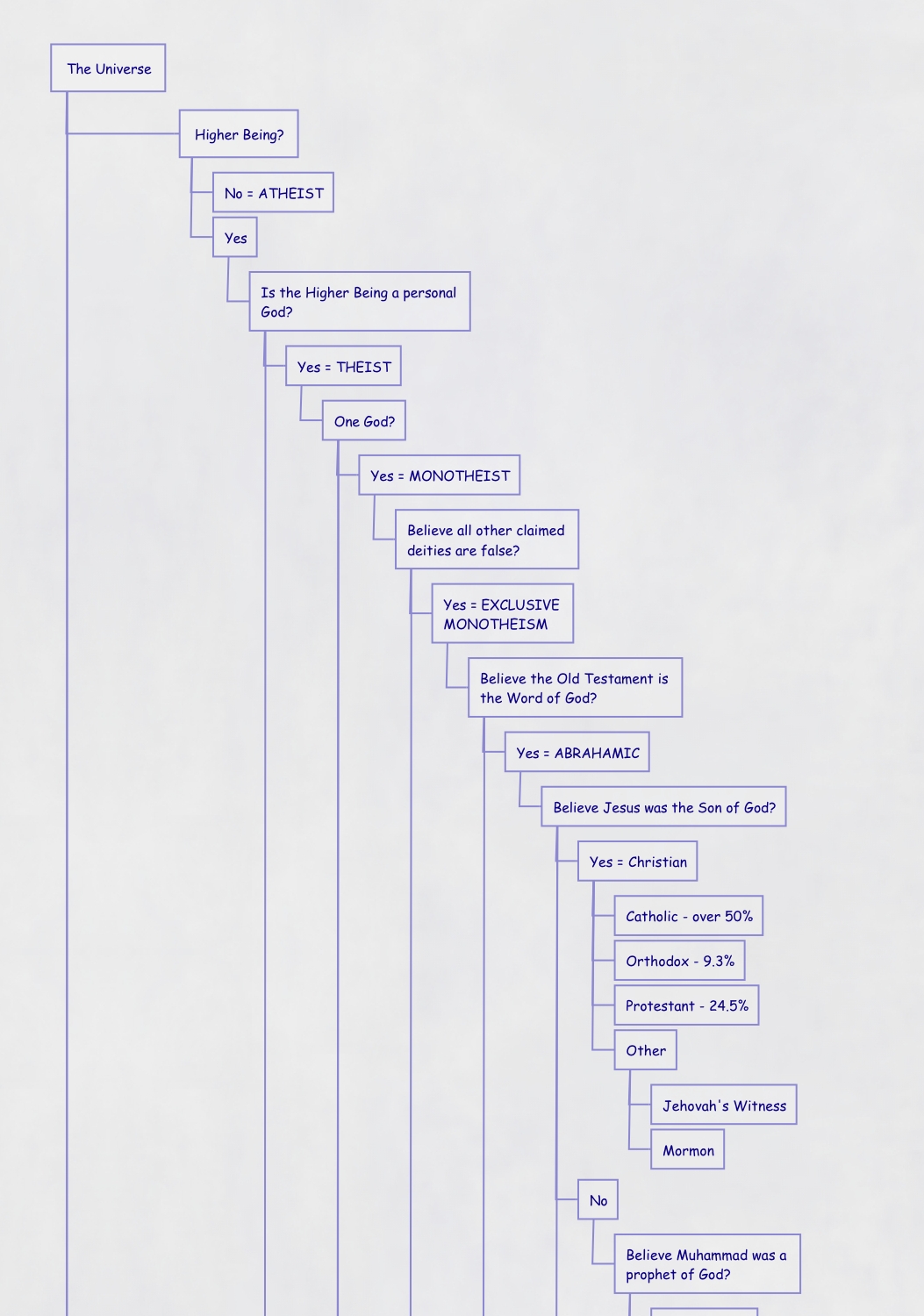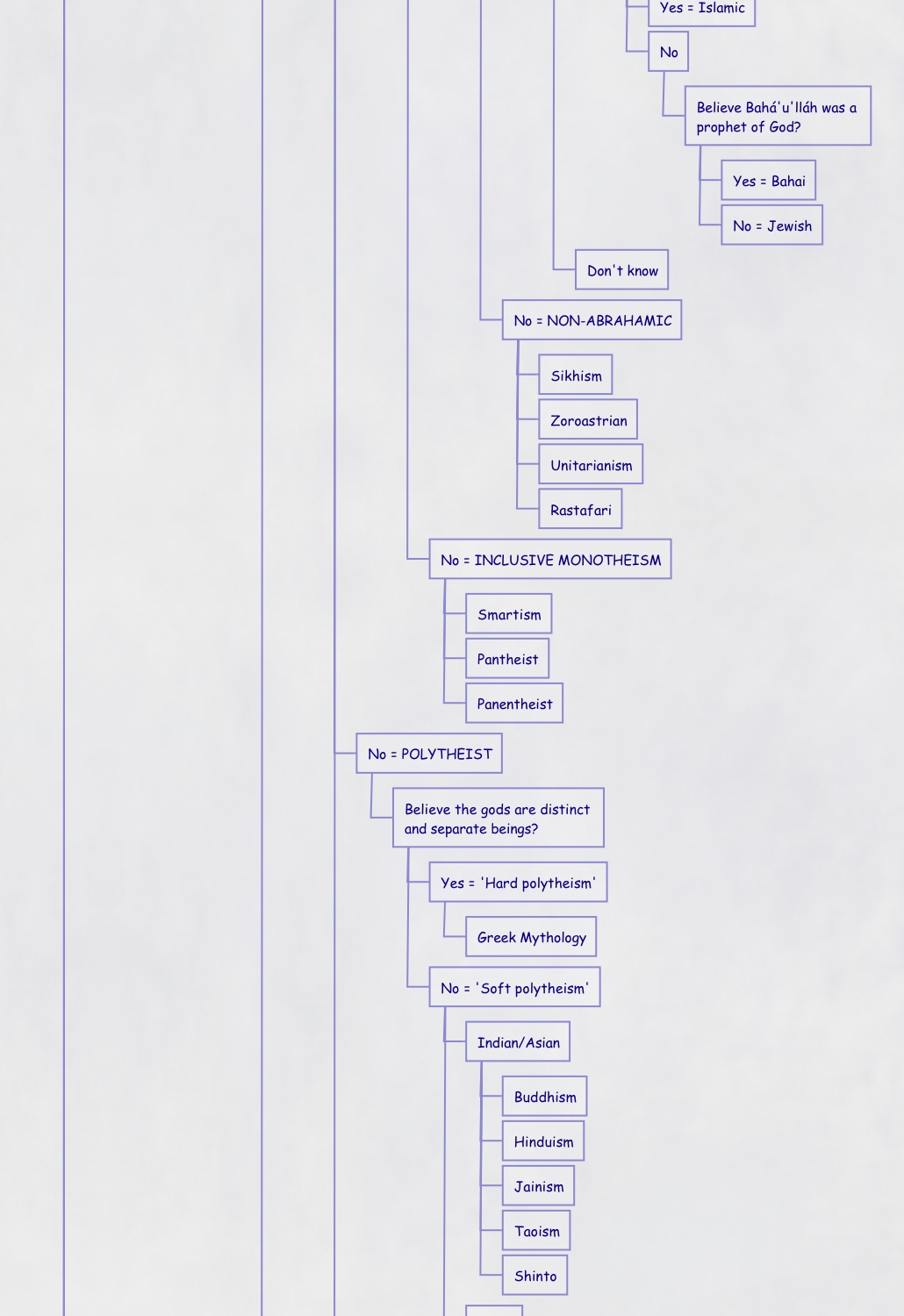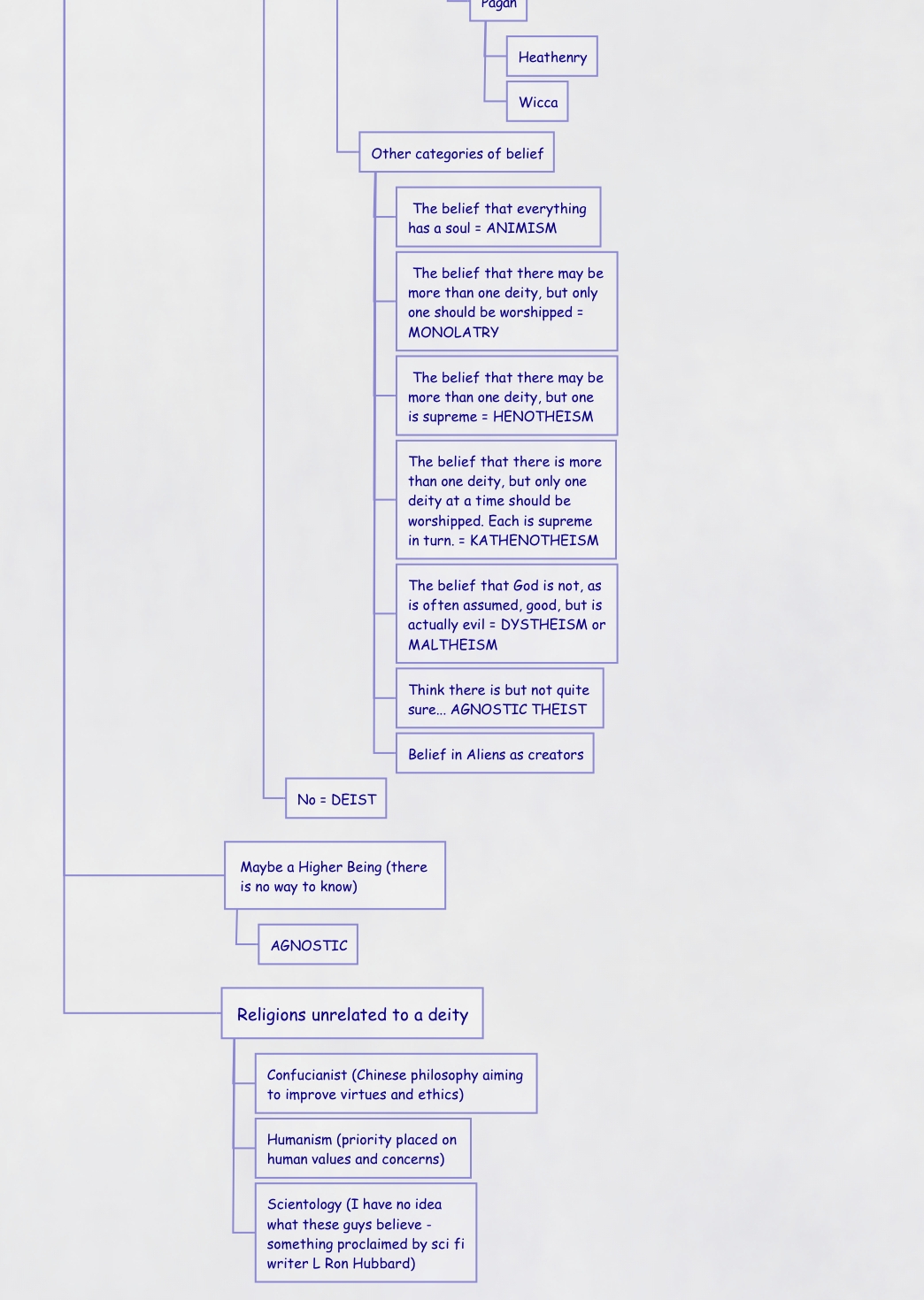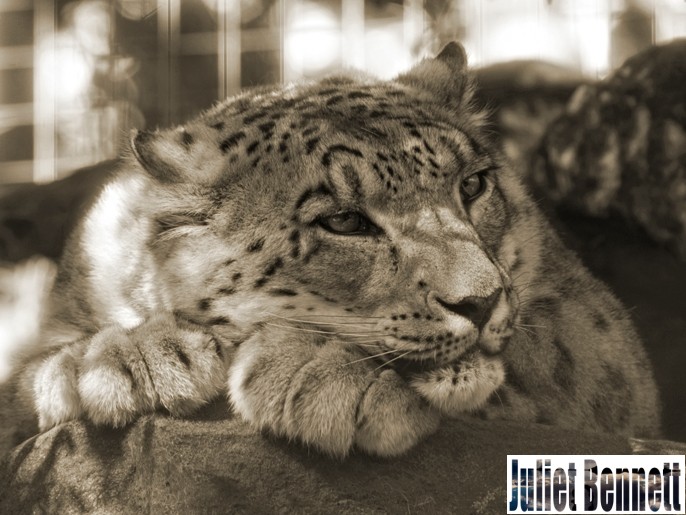I drew this up flowchart / map of religious beliefs about three years ago. I agree with this quote in part. Thinking can be terrifying. At the time I drew up this map I was at the beginning of an emotional process of learning to think – discovering where the worldview of my upbringing fit with the worldview of other people’s upbringing.
Can you see where your beliefs fit?
There seems to be an endless list of ism’s. Have I missed yours? If I’ve missed any to do with key categories of beliefs about the universe then please let me know so I can add it.
It was during this process of surfing wikipedia and exploring different ism’s that I first came across “Panentheism” (from Greek πᾶν (pân) “all“; ἐν (en) “in“; and θεός (theós) “God“; “all-in-God”) – the idea that everything is in that which we call “God” is different from “Pantheism” (πᾶν (pân) “all“; θεός (theós) “God“; “all-is-God”) which equates The Universe or Nature to “God”.
I like the idea of Panentheism so much that I’m now writing a thesis on it.
I like of pantheism too but seeing as we will never know what lies beyond what we know (until we know it) I cannot see a reason to keep the doors of our imagination open for what might exist beyond our universe. For example, the energies/macrososm we call “God” could encompass a universe of universes, or even a universe of universes of universes… we will never know. Ok, now I’ve lost myself.
I guess this is flowchart is the basis of a number of entries that I will post as I research Panentheism and Process Theology (the idea that everything is a process, an event, that nothing (even “you”) is ever a static “thing”). And by combining these ideas with what I told you about the other day – Narratology (the study of narratives) – I hope to see where and how these different ism’s may actually meet, differing mainly in the historical context that the words, images and stories that describe their beliefs developed.
“ISM” means adherence to an ideology.
Ideology refers to ideas that constitute a person’s goals, expectations and actions – what makes up a person’s view of the world.
My hypothesis is that all the above ideologies might actually meet each other in the idea of Panentheism.
That is, I think that everyone – atheists, agnostics, Christians, Hindus, Buddhists, Muslims, Jews, new-age people, etc. etc. – are panentheists, they just don’t know it yet.
What would this mean? Well, maybe if we see that our ideologies are talking about the same thing, it will be harder for our identities to get caught up in them. And seeing as misuse of identity-driven ideologies is a major cause of violence, from terrorism to intolerance, maybe some forms of violence will discover a peaceful resolution.
Of course a lot of people will disagree – which is the fun of having a hypothesis and exploring it.
Maybe I will like my conclusions, maybe I won’t, but it is in the process of thinking and exploring that I expect I will learn and grow and get even just a little bit closer to “truth”.
So somewhere in the intersection of philosophy, religion, and science, I have over the last few blog entries, attempted to introduce the narrative-oriented research project that I suppose will (after many years, if not my entire life), be my magnum opus.
Anyway, I’ve spent enough entries telling you what I want to do… now I have to figure out how I’m going to do it.
Any research project (at least any academic research project), starts with a “literature review”. The objective is to learn who has had similar thoughts in the past, what influenced their ideas, how their ideas evolved, how their ideas influenced other people’s ideas, (and so on and so on), and observing what practical actions have come from it.
As a friend said to me the other day, “There are no new ideas… just new applications of old ones. It’s how ideas are used that matters.” Hopefully whether or not we like the conclusions of our thinking, our ideas will be used in ways we can be proud of.
Picture:
Taken at a cafe I often walk past on my way to work – it always has these cool little quotes so sometimes I stand there feeling a little silly taking a photo of it with my phone.




